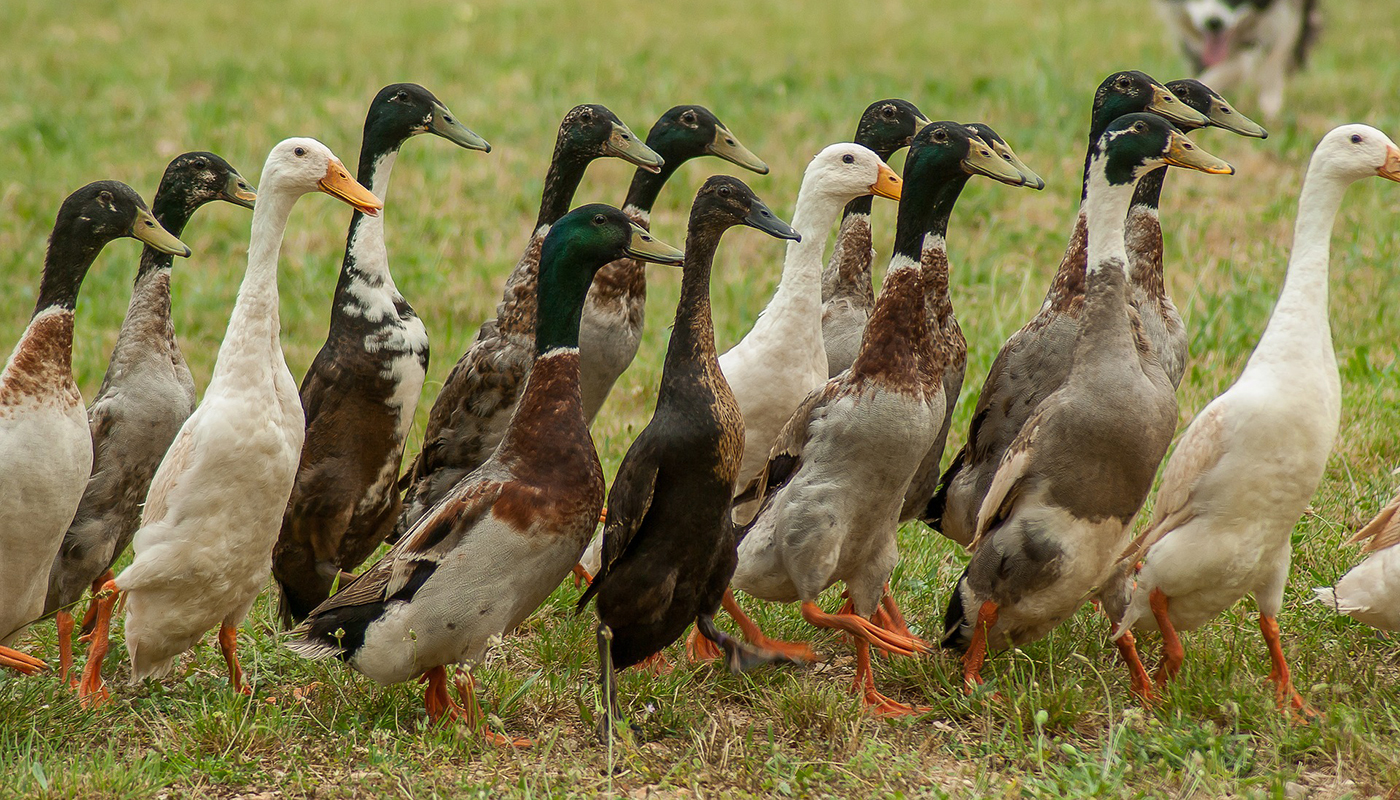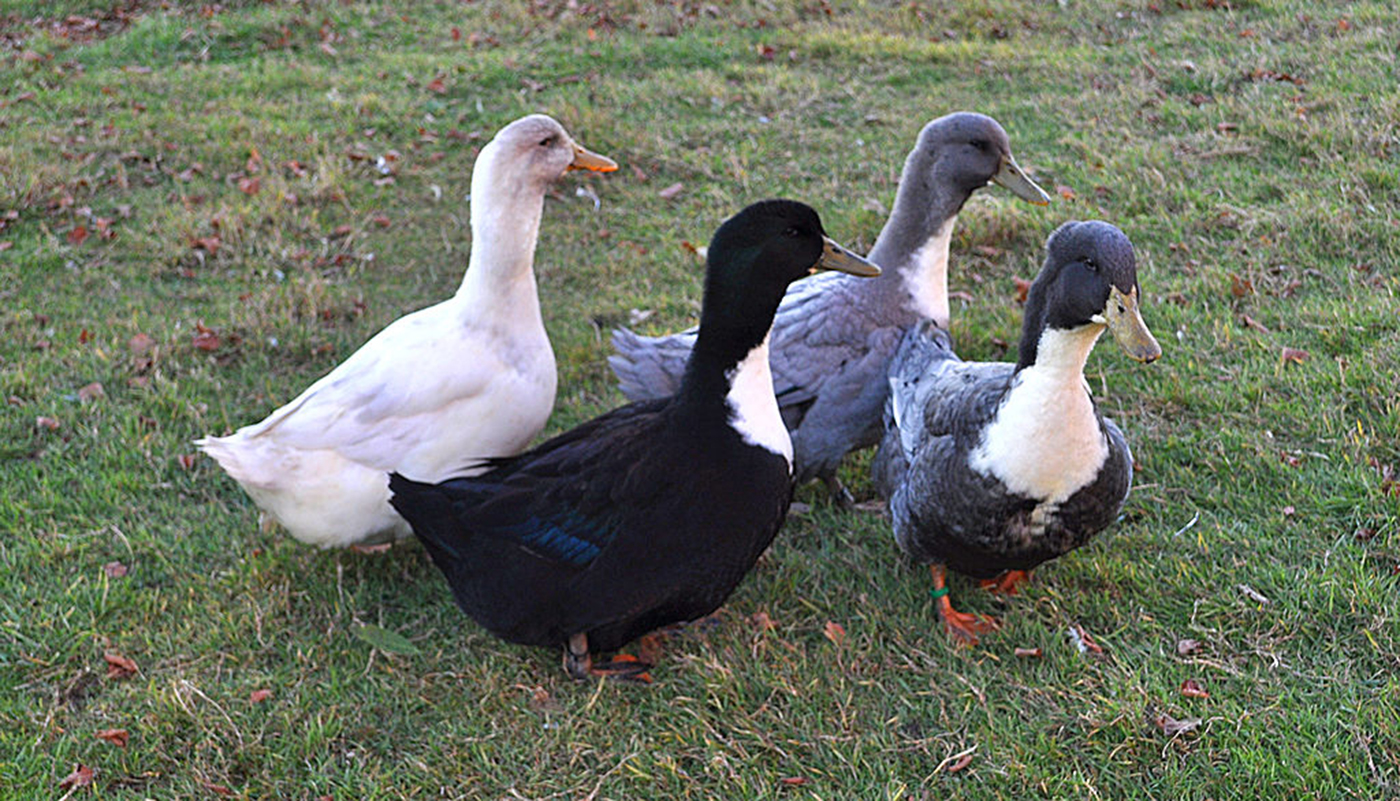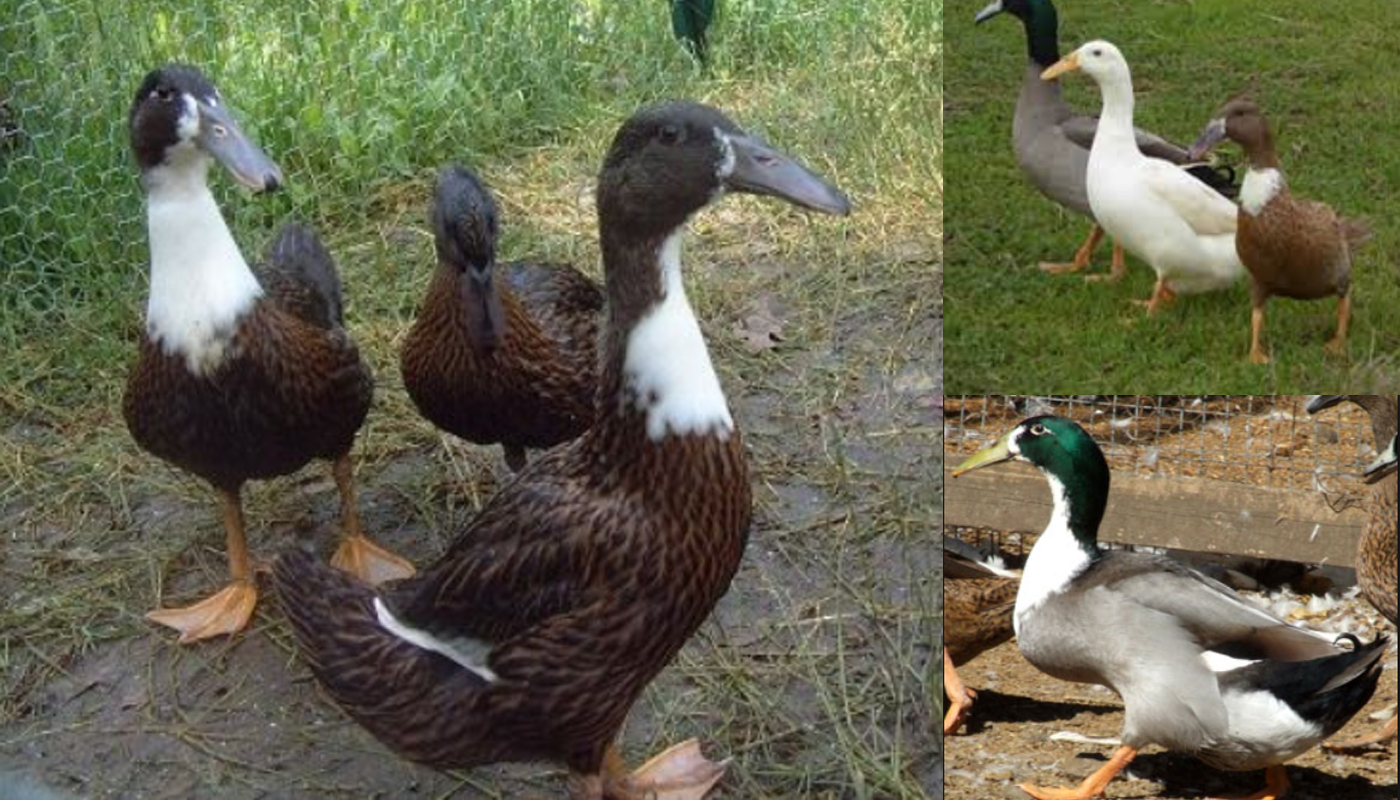
The Mallard duck is said to be one of the most abundant duck breeds in the world. It is found nearly all the world too. In some countries it is said to be an invasive species there are so many of them.
They are the most common ducks that are often seen in waterways, ponds and other smaller bodies of water. They are dabbling ducks that although are generally wild they can easily be tamed and domesticated.
They are not the best of egg layers but will lay at least one large egg a day. Although if domesticated they are mainly kept for show or ornamental purposes Mallard meat is quite lean and delicious have a wild taste to it. Like most game meat.
GENERAL INFORMATION |
|
|---|---|
| Country of Origin: | North America |
| American Poultry Association: | yes Recognized by the American Poultry Association |
| Duck Category: | Bantam |
| Duck Class: | American |
| Colors: | Gray, Date of acceptance: 1961 Snowy, Date of acceptance: 1987 |
| Good starter duck? | Yes |
| You may Also Like: | TOP 10 GOOD STARTER DUCK BREEDS |
| Other names known by | Canard Colvert (French) or de collar (Spanish) |
| Bantam Variety Available? | Mallard Duck breed is a Bantam breed of duck |
| You may Also Like: | 10 BEST BANTAM DUCK BREEDS |
APPEARANCE / IDENTIFICATION
| DUCK BITS | DESCRIPTION | COLOR | |||||||
|---|---|---|---|---|---|---|---|---|---|
| EYES⇒ | Same for M & F | Dark Brown | |||||||
| BILL⇒ | Differs in M & F | M – Yellow F – Black & Orange |
|||||||
| * Black bean tipped | |||||||||
| CRESTED? | No | ||||||||
| LEGS⇒ | Same for M & F Short Length |
Orange | |||||||
| Medium length and well-proportioned to their bodies | |||||||||
| FEET⇒ | Same for M & F Medium Sized/td> | Orange | |||||||
| WINGS⇒ | Differ in M & F | ||||||||
| F – Brown Penciled with a blue stripe M – Usually white with brown edges and a few blue underneath |
|||||||||
| FEATHERS⇒ | Differ in M & F | F – Reddish brown M – Depending on the variety |
|||||||
| F – has straight tail feathers M – has curled tail feathers and either a blue or green head. He also has a white ring around his neck. |
|||||||||
| SKIN COLOR⇒ | Same for M & F | White | |||||||
| AVERAGE WEIGHT⇒ |
|
||||||||
| *Bean: This is also called the nail. It is a small round bump found at the end of the duck’s bill. It is used for defence and to catch insects. It is almost like a fingernail and is damaged can grow back. It can also get overgrown much like fingernails if they do not have something to grind it down on. | |||||||||
| ** Note: This is an average weight for the male duck and not a guaranteed weight | |||||||||
USE/PURPOSE |
||||||||||||||||||||||||||||||||||||
|---|---|---|---|---|---|---|---|---|---|---|---|---|---|---|---|---|---|---|---|---|---|---|---|---|---|---|---|---|---|---|---|---|---|---|---|---|
Females/Hens⇒ |
Show, pet, ornamental, eggs and can be used for meat
|
|||||||||||||||||||||||||||||||||||
Males/Drakes⇒ |
Breeding, ornamental, show, pet and can be used for its meat
|
TEMPERAMENT |
|
|---|---|
| “They can be calm and friendly birds, but they tend to keep a bit of their wild nature in them. This can make them unpredictable at times.” | |
| Good with Kids? | Good around supervised kids depending on the bird and its upbringing |
| You may Also Like: | 10 BEST DUCK BREEDS TO KEEP AS FAMILY PET |
| Flyers? | They are excellent flyers it may be wise to have their wings clipped if in a built-up area |
| Noisy Birds? | They can get a bit loud when upset but otherwise, they are relatively quiet birds |
| Interact with other ducks? | They are sociable creatures that get along with most other ducks and birds |
| Best duck breeds to mix them with: | Any domestic breed of duck will complement the Mallard flock |
| Other animals? | They tend to avoid larger animals. Always watch dogs and cats around your ducks |
IDEAL ENVIRONMENT |
|
|---|---|
| “They are semi-wild ducks and as such like to have open spaces to forage about in.” | |
| Ideal Garden Size? | Small to medium |
| Can be Confined? | They do not really like to be cooped up |
| Free-Range | The wild side of their nature enjoys space and freedom |
| Penned Free-Ranging? | If there is a good amount of space to roam about in |
| Foragers | They are excellent at digging up and catching bugs in the garden |
| Endures heat well | Yes |
| Endures cold well | Yes |
| Special Requirements? | No |
| Ideal Duck House: | A duck hutch should always be safe and secure as well as well ventilated and insulated. It should be big enough to comfortably house all the ducks |
| Ideal Duck Pond: | A small pond or splash pool for them to dip in |
| Flock/Paddling Size: | Ducks need at least two in a flock they are sociable creatures that like to have another duck to paddle and chat to |
| You may Also Like: | 22 Best DOMESTIC DUCK BREEDS |
GOOD TO KNOW |
|
|---|---|
| Special Care/Attention Requirements? | They have no special needs |
| Known Predators: | Check with animal control in your area for known predators |
| Conservations Status: | Not Listed For more information on poultry, conservation status, check the American Livestock Conservancy Website |
| Breeders Clubs: | It is best to check with the American Poultry Association for various clubs and or organizations. |
| Where to buy them: | Purely Poultry, Metzer Farms or any local poultry supplier or poultry farm, the APA or check with the American Livestock Conservancy |
| Other: | If you do not want to risk having your ducks shipped check with your local poultry farms for advice on your nearest supplier. |
HISTORY
The Mallard is basically the main ancestor to most of if not nearly all of the domestic duck breeds found today.
They are native to many countries but were first known to have bred through Subtropical America, Europe, Asia and North Africa.
The breed was introduced to Chile, Brazil, New Zealand, Australia, South Africa, Peru, Uruguay and the Falkland Islands.
It is now one of the best known and could be the most plentiful breed of duck on the planet.
The name Mallard duck originated from an old French word mallart which meant wild duck. And the name was used to refer to any male wild drake.
The Mallard is also known as Pato de collar in Spanish and Canard Colvert in French.
Although there is still a high enough number of Mallards their numbers are dropping due to excessive hunting. This is also due to the destruction of the wetlands which is the Mallards as well as many other species habitats.
Health
They have no known health issues. Duck is less susceptible to disease than other birds such as chickens
- Ducks need water to ensure they do not get “wet feather” disease. This is where the preening gland dries out. Water also stops them from getting pests such as mites, fleas, ticks, lice, etc.
- Well, fed ducks should hardly have any health issues.
- Any birds kept in a flock need to be dewormed. Although ducks are not as prone as other poultry they should still have a de-worming regime. Speak to a local vet or poultry experts for advice. Our article on Healthy Ducks has some great tips and advice on de-worming ducks.
 Indian Runner Duck Breed – Everything You Need to Know
Indian Runner Duck Breed – Everything You Need to Know Australian Spotted Duck Breed – Everything You Need to Know
Australian Spotted Duck Breed – Everything You Need to Know The Best Domestic Duck Breeds for Meat Production
The Best Domestic Duck Breeds for Meat Production Blue-Winged Teal – Wild Dabbling Duck Breed
Blue-Winged Teal – Wild Dabbling Duck Breed Swedish Blue Duck Breed – Everything You Need to Know
Swedish Blue Duck Breed – Everything You Need to Know Keeping Backyard Ducks – Pros and Cons
Keeping Backyard Ducks – Pros and Cons Domestic Duck Breeds – Getting your Ducks in a Row! Part 2
Domestic Duck Breeds – Getting your Ducks in a Row! Part 2 Domestic Duck breeds that are or are Fast Becoming Quit Rare
Domestic Duck breeds that are or are Fast Becoming Quit Rare Wood Duck – Wild Dabbling Duck Breed
Wood Duck – Wild Dabbling Duck Breed Hookbill Duck Breed – Everything You Need to Know
Hookbill Duck Breed – Everything You Need to Know Saxony Duck Breed – Everything You Need to Know
Saxony Duck Breed – Everything You Need to Know Ancona Duck Breed – Everything You Need to Know
Ancona Duck Breed – Everything You Need to Know